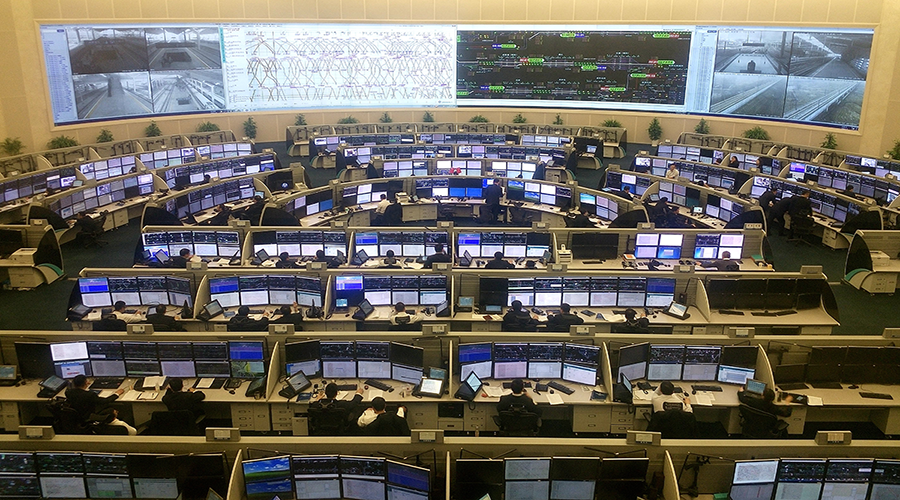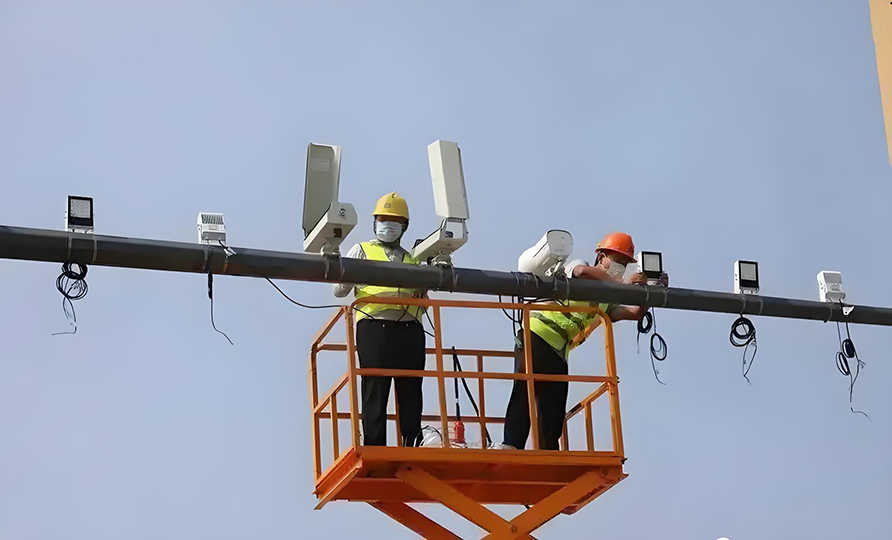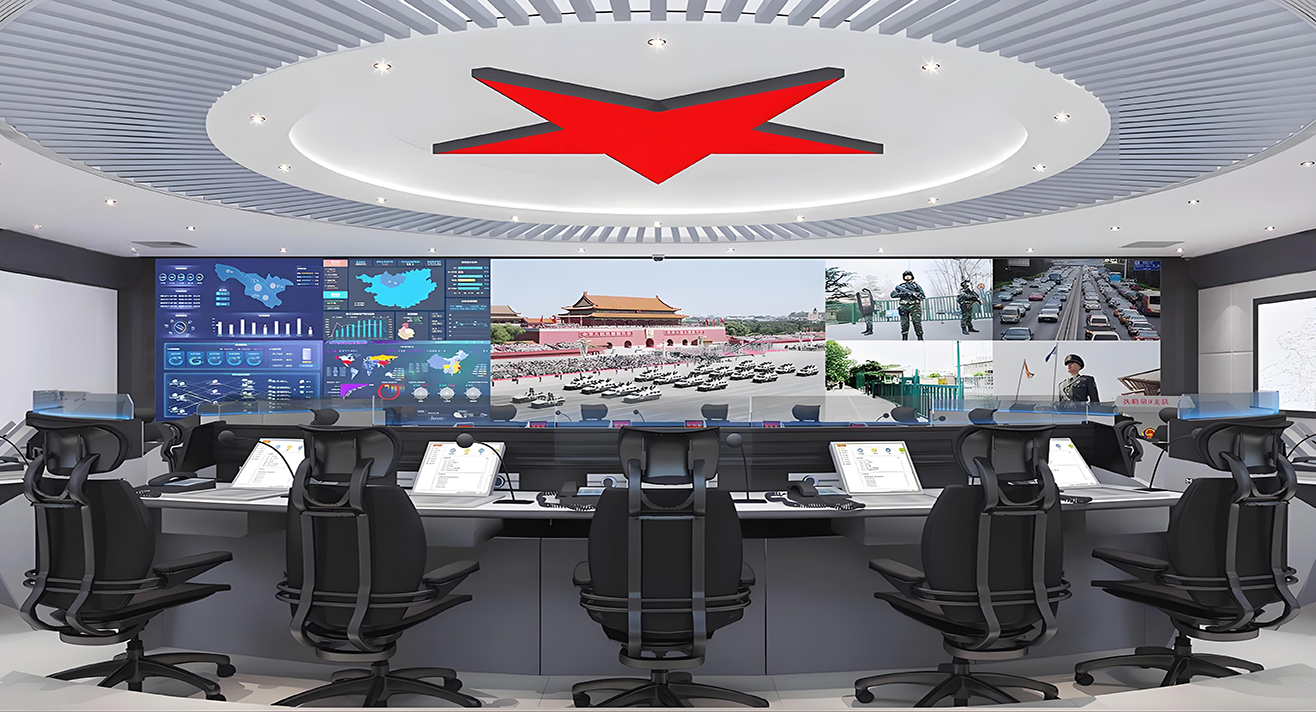导航栏
"QAIT" company focuses on the planning and construction of intelligent transportation. By applying advanced technologies, it helps cities, highways, and public transportation achieve informatization transformation. Its business covers intelligent traffic signal control, electronic police supervision, emergency command management, ETC services, and the construction of transportation dispatching centers, comprehensively promoting the digital and intelligent development of the transportation industry, and safeguarding traffic management and public travel.
1.Intelligent Transportation Overview:

Railway Dispatching Center
"Intelligent transportation" refers to a comprehensive transportation management system that effectively integrates advanced information technology, data communication and transmission technology, electronic sensing technology, control technology, computer technology, etc., and applies them to the entire ground traffic management system. It functions in a large scope and all-around manner, and is a real-time, accurate and efficient comprehensive transportation management system.
2.System Composition:
(1)Traffic Information Collection System: Collects information such as traffic flow, vehicle speed, road conditions, and vehicle positions through various sensors and devices, such as cameras, geomagnetic sensors, RFID tags, etc.
(2)Traffic Information Processing and Analysis System: Processes, analyzes, and mines the massive traffic information collected to extract valuable information, such as traffic congestion conditions, accident warnings, travel demand forecasting, etc.
(3)Traffic Control and Management System: Based on the results of traffic information processing, it realizes the automatic adjustment and optimization of traffic control facilities such as traffic signals, variable lanes, and intelligent speed limits, so as to improve road traffic efficiency and reduce congestion.

Traffic Signal Light
(4)Travel Service System: Provides travelers with real-time traffic information, such as road conditions, arrival times of buses and subways, parking space information, etc., to help travelers plan the best travel routes and choose suitable travel modes.
3.Application Fields:
(1)Urban Transportation: In urban roads, intelligent transportation systems can achieve adaptive control of traffic signals, automatically adjusting the green light duration according to real-time traffic flow to reduce vehicle waiting time. Meanwhile, through intelligent parking systems, vehicles are guided to quickly find parking spaces, improving the utilization rate of urban parking spaces.
(2)Highway: The application of intelligent transportation technologies can realize non-stop toll collection (ETC) on highways, improving vehicle traffic efficiency and reducing congestion at toll stations. In addition, traffic monitoring systems can be used to real-time monitor road conditions on highways, promptly detect traffic accidents and congestion, and release information to drivers through variable message signs and other means to guide vehicles to avoid congested sections.
(3)Public Transportation: The intelligent bus system enables real-time positioning and monitoring of vehicles. The dispatching center reasonably adjusts bus routes and vehicle departure intervals based on real-time traffic conditions and passenger flow, improving the punctuality and comfort of bus services. Meanwhile, passengers can query the arrival time of buses through mobile apps to arrange their travel time reasonably.
4.Development Significance:

Electronic Police
(1)Improving Traffic Safety: Intelligent transportation systems can help drivers avoid traffic accidents and enhance road traffic safety through various technical means, such as vehicle automatic emergency braking, lane departure warning, forward collision warning, etc.
(2)Relieving Traffic Congestion: Through real-time monitoring of traffic flow, optimizing traffic signal control and traffic guidance, vehicles can travel more smoothly, reducing traffic congestion and improving road traffic efficiency.
(3)Reducing Energy Consumption and Environmental Pollution: Intelligent transportation systems can guide vehicles to choose the optimal driving routes, avoiding frequent stopping and starting, thereby reducing energy consumption and exhaust emissions, and minimizing environmental pollution.
5.Construction of Emergency Command and Dispatch Center
The "Emergency Command and Dispatch System" is a comprehensive information system used to deal with various emergencies and urgent situations. It integrates multiple technologies such as communication, computer, network, and geographic information system, aiming to achieve rapid response, efficient command, and scientific dispatch for emergency events.
(1)System Composition
Communication Network: It includes wired communication networks (such as telephones, optical fiber networks, etc.) and wireless communication networks (such as walkie-talkies, satellite communications, 4G/5G networks, etc.), ensuring real-time and stable information transmission between the command center, on-site rescue personnel, and relevant departments.
Data Collection and Processing Module: Responsible for collecting information from various channels such as sensors, monitoring devices, and on-site reports, including video images of the incident site, environmental data, casualty status, etc. It also analyzes, organizes, and stores these data to provide a basis for command and decision-making.
Command Decision Support System: With the help of technologies and resources such as Geographic Information System (GIS), data analysis models, and emergency plan libraries, it conducts comprehensive analysis of the collected data, providing decision support information for commanders, including situation assessment of incidents, development trend prediction, and formulation of rescue plans.
Dispatch Command Module: According to command decisions, it issues instructions to each rescue force and relevant departments through the communication network, realizing the unified dispatch and command of resources such as personnel, materials, and equipment, so as to ensure the efficient and orderly implementation of rescue operations.
Video Surveillance System: Through devices such as cameras and drones distributed in various corners of the city, it real-time acquires video image information of the incident site, enabling commanders to intuitively understand the on-site situation, promptly grasp the rescue progress, and make accurate command decisions.
(2)Functional Characteristics
Rapid Response: It can be quickly activated after an emergency occurs, rapidly collecting and transmitting information, enabling commanders to understand the general situation of the incident and make response decisions in the shortest possible time.
Information Integration: Integrating various information resources scattered in different departments and regions to achieve information sharing and collaboration, avoiding information silos, and providing comprehensive and accurate information support for command and decision-making.
Visualized Command: Using technologies such as video surveillance and GIS maps, it presents the geographical information of the incident site, personnel distribution, resource allocation and other situations to commanders in a visualized manner, making command decisions more intuitive and scientific.

Emergency Command Center
Intelligent Auxiliary Decision-making: Through data analysis models and emergency plan libraries, it predicts the development trend of incidents, provides commanders with multiple rescue plans and decision-making suggestions, and improves the scientificity and accuracy of decision-making.
Resource Unified Scheduling: Unified management and scheduling of various emergency resources, rational allocation of resources according to rescue needs, ensuring efficient use of resources, and avoiding resource waste and repeated configuration.
(3)Application Fields
Public Safety Field: It is used to deal with natural disasters such as fires, earthquakes, floods, typhoons, as well as public safety incidents such as terrorist attacks, mass incidents, and major traffic accidents, so as to protect people's lives and property and maintain social stability.
Urban Management Field: It can be applied to the daily management and emergency response of cities, such as urban traffic congestion relief, emergency repair of municipal facilities, prevention and control of public health incidents, etc., to improve the operational efficiency and emergency management level of cities.
Industrial Production Field: In industrial fields such as chemical, mining, and power, it is used to deal with emergencies such as safety accidents and leakage accidents in the production process, ensuring the safe production and normal operation of enterprises.
(4)Development Trends
Intelligence: With the continuous development of technologies such as artificial intelligence, big data, and the Internet of Things, emergency command and dispatch systems will become increasingly intelligent. Through intelligent algorithms to analyze and mine massive data, intelligent early warning, intelligent decision-making, and intelligent dispatching for sudden emergencies can be realized, improving the system's emergency response capabilities and disposal efficiency.
Integration: In the future, emergency command and dispatch systems will place greater emphasis on integration with other related systems, such as smart city systems, Internet of Things (IoT) systems, public health monitoring systems, etc. Through interconnection and data sharing among systems, the deep integration of emergency management and urban development can be achieved, forming an all-round and multi-level emergency management system.
Mobility: To meet the needs of on-site command and emergency response personnel to access information and conduct command and dispatch anytime, anywhere, emergency command and dispatch systems will continue to develop towards mobility. By developing mobile terminal applications, relevant personnel can use mobile devices such as smartphones and tablets to receive commands in real time, upload information, view live videos, etc., improving the flexibility and convenience of emergency command.